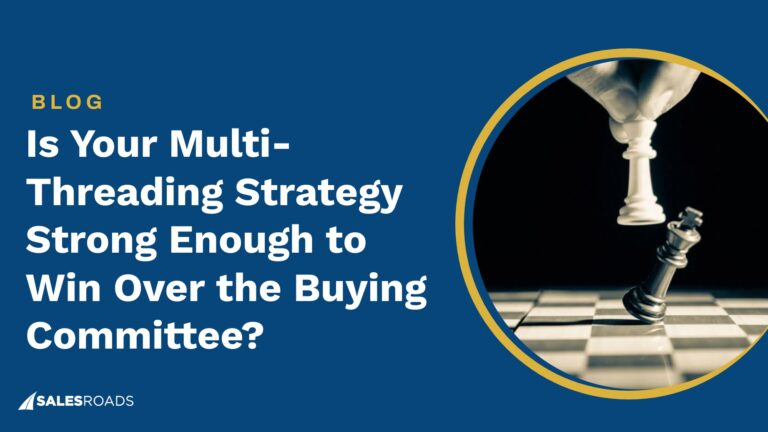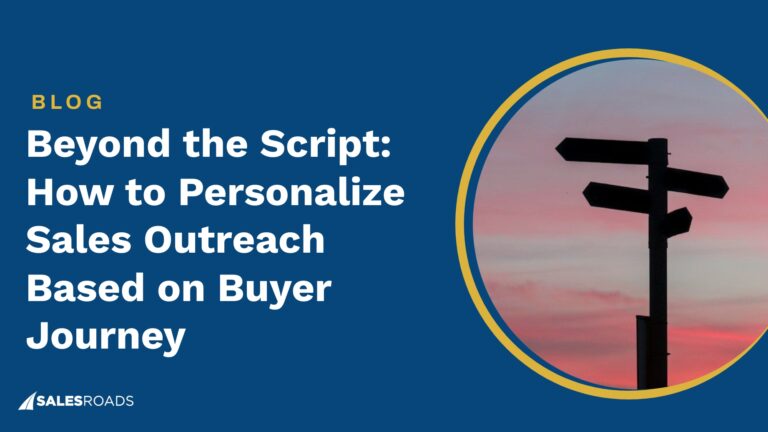Some prospects are much closer to becoming paying customers than others. B2B lead scoring helps you identify which leads are most likely to convert by assigning a numerical value to each one.
What is B2B Lead Scoring?
B2B lead scoring is a methodology used by businesses to rank and prioritize potential leads based on their likelihood to convert into customers. This value is determined by a lead scoring system, which takes into account a variety of factors such as firmographics, job titles, buying authority, etc.
How Lead Scoring Differs from Traditional Lead Qualification
Both traditional lead qualification and B2B lead scoring aim to identify high-potential leads, but they go about it in different ways.
| Traditional Lead Qualification | B2B Lead Scoring | |
| Process | Manual | Automated |
| Approach | Qualitative | Quantitative |
| Scalability | Limited | High |
| Prioritization | Less effective | Effective |
The ideal approach depends on your specific needs and resources. Here’s a quick guide:
- For smaller sales teams with manageable lead volume, traditional lead qualification might suffice.
- For larger teams or those dealing with high lead volumes, B2B lead scoring offers a more scalable and efficient solution.
However, the best approach often involves a combination of both. You can use lead scoring to identify promising leads and then follow up with traditional qualification techniques to get a complete picture before connecting them with sales.
Why Should You Care About Lead Scoring?
Companies are constantly bombarded with leads. But not all leads are created equal. Sifting through a mountain of unqualified prospects can be a major drain on your sales and marketing resources. This is where B2B lead scoring helps you identify the most promising leads and prioritize your outreach efforts.
By assigning points to different factors, you can create a lead scoring system that accurately reflects the potential value of each lead. High-scoring leads are then prioritized for outreach by the sales team, while lower-scoring leads may be nurtured with additional marketing content before they’re sales-ready.
The Benefits of Using Lead Scoring for Lead Generation
Quality trumps quantity when it comes to leads. A successful lead scoring system has multiple benefits for your company including:
Prioritizing High-Value Leads
Lead scoring helps you separate the wheat from the chaff. By assigning scores based on predetermined factors, you can identify leads who are most likely to convert into paying customers.
This allows your sales team to focus their energy on nurturing high-quality leads, ultimately closing more deals faster.
Personalizing Marketing Efforts
The key to successful B2B lead generation is delivering the right message to the right person at the right time. B2B lead scoring provides valuable insights into a lead’s interests and buying stage. This allows you to personalize the customer journey by delivering targeted content and nurturing campaigns that resonate with their specific needs.
This personalized approach fosters trust and builds stronger relationships with your prospects, ultimately guiding them toward a purchase decision.
Increasing Sales and Revenue
Imagine a scenario where your sales reps spend less time chasing unqualified leads and more time engaging with genuinely interested prospects. This is the power of B2B lead scoring.
Budgets are precious, and B2B lead scoring helps you target your efforts more effectively. By understanding which types of leads are most valuable, you can tailor your campaigns to attract those ideal customers.
This targeted approach ensures you’re not wasting resources on unqualified leads, ultimately improving your bottom line.
Streamlining the Sales Process
B2B lead scoring fosters better communication and alignment between sales and marketing teams. Marketing can identify and nurture qualified leads, while sales can focus their energy on closing deals with the most promising prospects.
This streamlined approach eliminates confusion and wasted effort, resulting in a more efficient sales process that drives growth.
Different Lead Scoring Models
B2B lead scoring empowers you to identify the most promising prospects within your lead pool. But how do you determine which factors matter most?
Different lead scoring models leverage various data points to create a comprehensive picture of a lead’s value. Let’s delve into some key models to consider:
Demographic Information
Demographic information provides valuable insights into a lead’s potential fit for your product or service. This model assigns points based on factors like:
- Job title: Leads with titles closer to the decision-making process (e.g., CEOs, Directors) typically score higher.
- Company size: Larger companies often have bigger budgets and may require different solutions than smaller businesses.
- Industry fit: Leads from industries you specialize in are more likely to be qualified prospects.
By incorporating demographics into your lead scoring system, you can prioritize leads who share characteristics with your ideal customer profile.
Company Information
Digging deeper than basic demographics, company information provides further context about a lead’s potential value. This model might consider:
- Annual revenue: Companies with higher revenue often have larger budgets and may be more suitable for high-value offerings.
- Location: Leads located in regions where you have a strong presence or target market may be prioritized.
- Number of employees: Company size can indicate buying power and the complexity of their needs.
By integrating company information, you can gain a more comprehensive understanding of a lead’s potential deal size and resource needs.
Online Behavior
A prospect’s online activity on your website is a treasure trove of information about their interest level. This model assigns points based on actions like:
- Page visits: Leads who visit product pages or pricing information typically score higher.
- Content downloads: Downloads of white papers or ebooks related to your solutions indicate a deeper level of engagement.
- Time spent on website: Leads who spend a significant amount of time exploring your website likely have a stronger interest.
By analyzing online behavior, you can identify leads actively researching solutions and prioritize those who are further along the buyer’s journey.
Email Engagement
Effective communication is key in B2B sales. This model assigns points based on a lead’s interaction with your emails:
- Email opens: Leads who consistently open your emails are likely more receptive to your messaging.
- Click-through rates: Leads who click on calls to action within your emails demonstrate a higher level of interest.
- Link downloads: Leads who download attachments or click on links to additional resources are actively seeking information.
By monitoring email engagement, you can identify leads who are receptive to your outreach and prioritize those who are actively nurturing their interest.
Social Engagement
Social media engagement can reveal valuable insights into a lead’s brand awareness and buying intent. This model might consider:
- Following your company: Leads who follow your social media pages are actively interested in your brand.
- Sharing your content: Leads who share your content become advocates and are more likely to be receptive to sales outreach.
- Participating in industry discussions: Leads who engage in industry conversations demonstrate a knowledge of your field and may be actively seeking solutions.
By incorporating social media engagement, you can identify leads who are familiar with your brand and are actively involved in relevant industry discussions.
Spam Detection
This model utilizes various techniques to identify and filter out potential spam leads, such as:
- Invalid email addresses: Eliminates leads with incorrect or non-existent email addresses.
- Excessive form submissions: Flags leads who submit forms with nonsensical data or at an unusually high frequency.
- Suspicious IP addresses: Identifies leads originating from known spam sources to prevent them from skewing your scoring system.
By implementing spam detection measures, you can ensure the integrity of your lead data and prevent unqualified leads from inflating your lead scores.
How to Implement Lead Scoring in Your B2B Strategy?
Implementing a lead scoring system in your B2B sales strategy involves several key steps to ensure its effectiveness and alignment with your business goals.
Identify Key Scoring Criteria
The foundation of any effective B2B lead scoring system lies in identifying the factors that matter most. This involves collaborating with your sales and marketing teams to determine which characteristics and actions are the strongest indicators of a lead’s potential to convert into a customer.
Is it demographics, website behavior, marketing engagement, or company information? By focusing on your key scoring criteria, you can create a system that accurately reflects the characteristics of your ideal customer profile.
Assign Point Values to Criteria
Once you’ve identified your key criteria, it’s time to assign point values to each factor. This process involves considering the relative importance of each action or characteristic in predicting a lead’s conversion potential.
For example, a lead who downloads a white paper related to your core product offering might receive a higher point value than someone who simply visits your homepage.
Remember, there’s no one-size-fits-all approach. Tailor your point values to your specific business goals and target audience.
Use Data and Analytics for Accurate Scoring
Data is the lifeblood of any B2B lead scoring system. Utilize automation tools and website analytics to gather real-time data on lead behavior. Analyze historical data to identify trends and determine which actions correlate most strongly with sales success.
By incorporating data and analytics, you can ensure your scoring model is based on concrete evidence and accurately reflects the buying journey of your ideal customer.
Set Up a Scoring Threshold for Sales Readiness
Finally, you need to establish a threshold score that indicates when a lead is ready to be handed off from marketing to sales. This score represents the point at which a lead has demonstrated a sufficient level of interest and purchase intent to warrant the attention of your sales team.
Setting the right threshold is crucial. A score that’s too high can result in qualified leads slipping through the cracks, while a score that’s too low can overwhelm your sales team with unqualified prospects.
10 Lead Scoring Best Practices to Close More Deals
B2B lead scoring is a powerful tool, but like any strategy, it thrives on continuous optimization.
Here are 10 best practices to ensure your B2B lead scoring system delivers the results you need to close more deals:
Align Sales and Marketing Goals
For a B2B lead scoring system to truly shine, your sales and marketing teams need to be on the same page. Align your goals by jointly defining what constitutes a “sales-ready” lead and the ideal customer profile. This ensures everyone is working towards the same objective and scoring leads based on the same criteria.
Regularly Review and Update Your Scoring Model
The B2B landscape is constantly evolving, and so should your lead scoring model. What actions were strong indicators of purchase intent last year might not hold the same weight today.
Regularly review and update your scoring criteria based on market trends and ongoing data analysis.
Utilize Data-Driven Insights
Don’t score leads in a vacuum. Leverage the power of data-driven insights. Utilize automation tools and website analytics to gather real-time data on lead behavior. Analyze historical sales data to pinpoint which actions correlate most strongly with successful conversions.
Incorporate Feedback from Sales Teams
Your sales team is on the front lines, interacting with leads daily. Incorporate feedback from them to refine your scoring model. They can provide valuable insights into which lead behaviors are most indicative of a prospect’s readiness to buy.
Keep Your Scoring Criteria Simple and Relevant
While B2B lead scoring can be comprehensive, it shouldn’t become overly complex. Maintain simple and relevant scoring criteria. Focus on the key factors that distinguish high-value leads from those who are simply browsing. A clear and concise scoring system is easier to manage and interpret.
Leverage CRM and Automation Tools
You don’t have to reinvent the wheel. Utilize CRM and automation tools designed to streamline the lead scoring process. These tools can automate data collection, assign scores based on pre-defined criteria, and trigger workflows based on a lead’s score.
Focus on High-Quality Data
“Garbage in, garbage out” applies to B2B lead scoring as well. Focus on high-quality data. Implement data hygiene practices to ensure your lead information is accurate and up-to-date. Inaccurate data can lead to skewed scoring and hinder your ability to identify the right prospects.
Monitor and Analyzing Lead Behavior
Don’t just set a lead score and forget it! Monitor and analyze lead behavior over time. Identify trends and patterns that might indicate the need to adjust your scoring criteria. For example, if a particular type of content download consistently precedes high-value conversions, consider increasing its point value in your scoring model.
Ensure Continuous Communication Between Teams
B2B lead scoring is a team effort. Ensure continuous communication between sales and marketing teams. Regularly share insights and data to maintain alignment and ensure both teams understand how lead scores are being used and interpreted.
Test and Refine Your Approach
There’s no “one size fits all” approach to B2B lead scoring. Continuously test and refine your approach. Experiment with different scoring models and thresholds to see what delivers the best results. Track your results and adapt your strategy based on what’s working and what’s not.
Common Lead Scoring Pitfalls and How to Overcome Them
It’s susceptible to pitfalls. Here are some common challenges and how to navigate them to ensure your B2B lead scoring system delivers optimal results:
Data Quality Issues
Inaccurate or incomplete data can significantly hinder the effectiveness of your B2B lead scoring system. This can happen due to typos during lead capture, outdated information, or lack of data hygiene practices.
Overcome it: Implement data validation processes to ensure the accuracy of lead information during capture. Regularly clean and update your lead data to eliminate outdated or irrelevant information.
Overcomplicating the Scoring Model
While B2B lead scoring should be comprehensive, it shouldn’t become overly complex. Assigning too many factors with intricate point values can be cumbersome to manage and interpret.
Overcome it: Focus on the key factors that distinguish high-value leads from casual browsers. Prioritize the most impactful actions and assign clear, concise point values. A simpler scoring model is easier to maintain and implement.
Misalignment Between Sales and Marketing
For a B2B lead scoring system to truly shine, your sales and marketing teams need to be on the same page. Misalignment can lead to confusion about which leads are sales-ready and how they should be prioritized.
Overcome it: Foster regular communication and collaboration between sales and marketing. Jointly define what constitutes a “sales-ready” lead and the ideal customer profile. Ensure everyone understands the scoring criteria and how it’s used to prioritize leads.
Outdated Scoring Criteria
The B2B landscape is constantly evolving, and so should your lead scoring model. Relying on outdated criteria can lead to inaccurate assessments of a lead’s potential.
Overcome it: Regularly review and update your scoring model based on market trends and ongoing data analysis. Identify which actions are no longer strong indicators of purchase intent and adjust point values accordingly.
Inconsistent Follow-Up on Scored Leads
A great B2B lead scoring system is only effective if it’s followed by action. Inconsistent follow-up on scored leads can lead to missed opportunities.
Overcome it: Develop clear workflows for nurturing B2B leads based on their score. Ensure your sales team has the resources and tools to prioritize and follow up with high-scoring leads in a timely manner.
Bottom Line
Don’t let unqualified leads drain your sales and marketing resources. B2B lead scoring empowers you to identify your most promising prospects, prioritize your outreach efforts, and ultimately close more deals.
Remember, B2B lead scoring is an ongoing process. By regularly monitoring your results, refining your scoring criteria, and ensuring alignment between sales and marketing, you can unlock its full potential and achieve significant sales growth.










